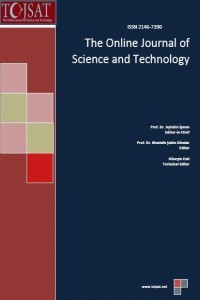Value of Blended Learning in Supporting Leadership Development Programs
Value of Blended Learning in Supporting Leadership Development Programs
blended learning, facilitators, professional development, participants learning communities,
___
- Chrislip, D.D. and Flowers, J. (2001) The Change Project: David Chrislip. Collaboration: The New Leadership. A conversation between David Chrislip and Joe Flowers. www.well.com/user/bbear/chrislip.
- Educause (2009). EDUCAUSE Learning Initiative Discovery Tool: Blended Learning Workshop Guide. Unit 6: Quality Assurance. Retrieved 19 June 2011 from http://net.educause.edu/ir/library/pdf/ELI80076.pdf e-Learning Guidelines (2006).
- Garrison, R., & Vaughan, H. (2008). Blended learning in higher education: Framework, principles and guidelines. San Francisco: Jossey-Bass.
- Gillani, B.B. & Relan, A. (1997). Incorporating interactivity and multimedia into web-based instruction. In B. H. Khan (Ed.), Web-based instruction. Educational Technology Publications: New Jersey.
- Graham, C. (2006). Blended learning systems. Definitions, current trends and future directions. In C.Bonk & C.
- Griffith University (2008). Griffith Blended Learning Strategy: 2008-2010. Retrieved May 11, 2011, from http://www.griffith.edu.au/gihe/pdf/Blended-learning-strategy-FINAL.pdf Kaplan, S (2002). www.icohere.com.
- Knapp, M.S., Copeland, M.A., & Talbert, J.E. (2003). Leading for Learning: Reflective tools for School and District Leaders. Center for the Student of Teach and Policy, University of Washington.
- Krause. K. (2007). Blended Learning Strategy. Retrieved 21 July from http://www.griffith.edu.au/aboutgriffith/plans-publications/pdf/blended-learning-strategy-january-2008-april-edit.pdf.
- Littlejohn, A., & Pegler, C. (2007). Preparing for Blended e-Learning. London: Routledge.
- Meyer, K. A. (2002). Quality in distance education: Focus on on-line learning. Retrieved 19 June 2011 from http://www.westga.edu/~distance/ojdla/spring141/shelton141.html. National Policy Board for Educational Administration (NPBEA, 2011).
- Quality Matters (2008). QM Lit Review. Retrieved 14 July 2011 from http://www.qmprogram.org/files/rubric/litReview.pdf.
- Queensland University of Technology (2011). Guidelines for the support of e-learning in new Zealand tertiary institutions, Retrieved 11 May 2011, from http://elg.massey.ac.nz/Guidelines-questions.pdf.
- ISSN: 2146-7390
- Başlangıç: 2011
- Yayıncı: The association of science, education and technology
The Effects of Nature Education Project on the Environmental Sensitivity
Naim UZUN, Özgül KELEŞ, Funda Varnacı UZUN
Factors Affecting Leisure Time Activities According to Vocational High School Students
The role of using Facebook in improving English
An Agent Based Approach for Project Management in Construction
Online Tracking Nutrition and Health of High School Students
Distribution of salinity and nutrients in soils under recently environment change
Taha EL-MAGHRABY, Mohamed ABDEL-WAHAB
Cement Stabilization of Compacted Expansive Clay
Mahamedi ABDELKRİM, Khemissa MOHAMED
Antiviral Activity of Polyphenols Extracts From Daucus carota against Herpes Simplex Virus type 1
Value of Blended Learning in Supporting Leadership Development Programs
